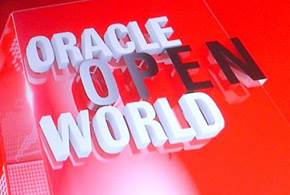The Oracle cofounder used the bulk of his keynote to criticize Amazon’s cloud service claiming that it’s far less powerful and costlier than Oracle’s.
Oracle Executive Chairman Larry Ellison didn’t mince words during his Oracle OpenWorld keynote Sept. 20 when he said his company is in a perfect position to take down Amazon Web Services as the top cloud infrastructure provider.
In fact the Oracle co-founder didn’t hold back much of anything in his withering critique of the cloud computing leader, a company Ellison readily admits is a pioneer.
“Amazon is lower cost, right? Used to be, but not anymore,” said Ellison. And later: “Amazon is the leader in cloud infrastructure, right? That’s not true anymore.”
Point by point, Ellison aimed to paint a picture that AWS is slower, more resource-hungry, less open and more expensive than Oracle Cloud Services.
Amazon did not reply to a request for a response to Ellison’s comments at deadline. But analyst Charles King says AWS is still king of the hill.
“The points Ellison made about AWS’ lack of openness and performance relative to enterprise class systems and solutions are hardly new. In fact, cloud platforms that have been gaining on AWS, including Microsoft Azure and IBM Cloud/Softlayer have been making and winning on those points, particularly among enterprise customers,” King, principal analyst with Pund-IT, told eWEEK.
“That doesn’t make Oracle any kind of leader—just another traditional vendor trying to find a way forward in the new world of cloud though from some way further back in the pack.”
In setting up the comparison Ellison noted that Oracle has carried customers through four generations of data center technology starting with the original database product that was designed for mini and mainframe computers, to client/server, the Internet and now cloud computing.
He noted that unlike AWS, data and applications can be moved back and forth between Oracle Cloud or to on-premises data centers and the two environments can still interact with each other.
“The latest Oracle Cloud Database 12.2 is optimized for running the Oracle database. We’ve done a lot of work on 12.2 optimizing cloud features.” He said Oracle’s high end Exadata Cloud service is a hundred percent compatible with on-premise Oracle software companies run in their data center. “It’s an easy migration,” said Ellison.
He noted that a lot of companies are still experimenting with cloud computing and not ready to fully transition to the cloud. As one example he suggested companies could move application testing and development off the data center to the Oracle Cloud while maintaining their legacy apps and data on-premises.
He also emphasized that while cloud computing has many advantages, he expects there to be “a long period of co-existence” between traditional data centers and cloud computing.
Citing a series of benchmark tests results that he said anyone, including Amazon, was free to replicate or dispute, Ellison showed how Oracle’s performance far outdistanced AWS.
“We ran AWS’s fastest server as fast as we could and it was still 24 times slower than ours in analytic queries per hour. That has a huge cost implication when you can do in one hour using Oracle what it takes 24 hours using Amazon,” he said.
He also disparaged Amazon’s “hot, new analytics database Redshift” with results that showed Oracle was a hundred times faster. Ellison also sought to refute the notion that AWS is a more open system.
In the case of Redshift he noted that its roots date back to an open source database called Postgres (also called PostgreSQL) that Amazon bought out of bankruptcy a few years ago from a company that had created a custom version.
Ellison noted that Amazon has continued to develop the database now known as Redshift on a proprietary basis strictly for its own systems. By contrast, Oracle’s mySQL and other products are open source and Oracle contributes advances back to the community of open source developers.
“Redshift is closed and proprietary. If you run an app on Redshift you’re locked in,” said Ellison.
AWS didn’t fare much better in Ellison’s comparison of online transaction processing services (OLTP). Ellison asserted that benchmarks showed Oracle Cloud performing 35 times faster than Amazon’s Aurora software for OLTP.
Again, Ellison noted that Aurora is a fork of mySQL, the open source database now owned by Oracle. “You can run mySQL anywhere,” said Ellison. “Aurora runs on Amazon, it’s not open source.”
He wrapped up with an impressive demonstration of the flexibility of Oracle’s Cloud, taking about ten minutes to create a virtual datacenter using a visual interface that simply required checking off the desired features, capacity and other criteria.
“I could have taken an existing data center and mapped it all to our cloud,” he said. “When the data center is virtual you don’t have to touch or retest any of your programs. This is a big deal.”







